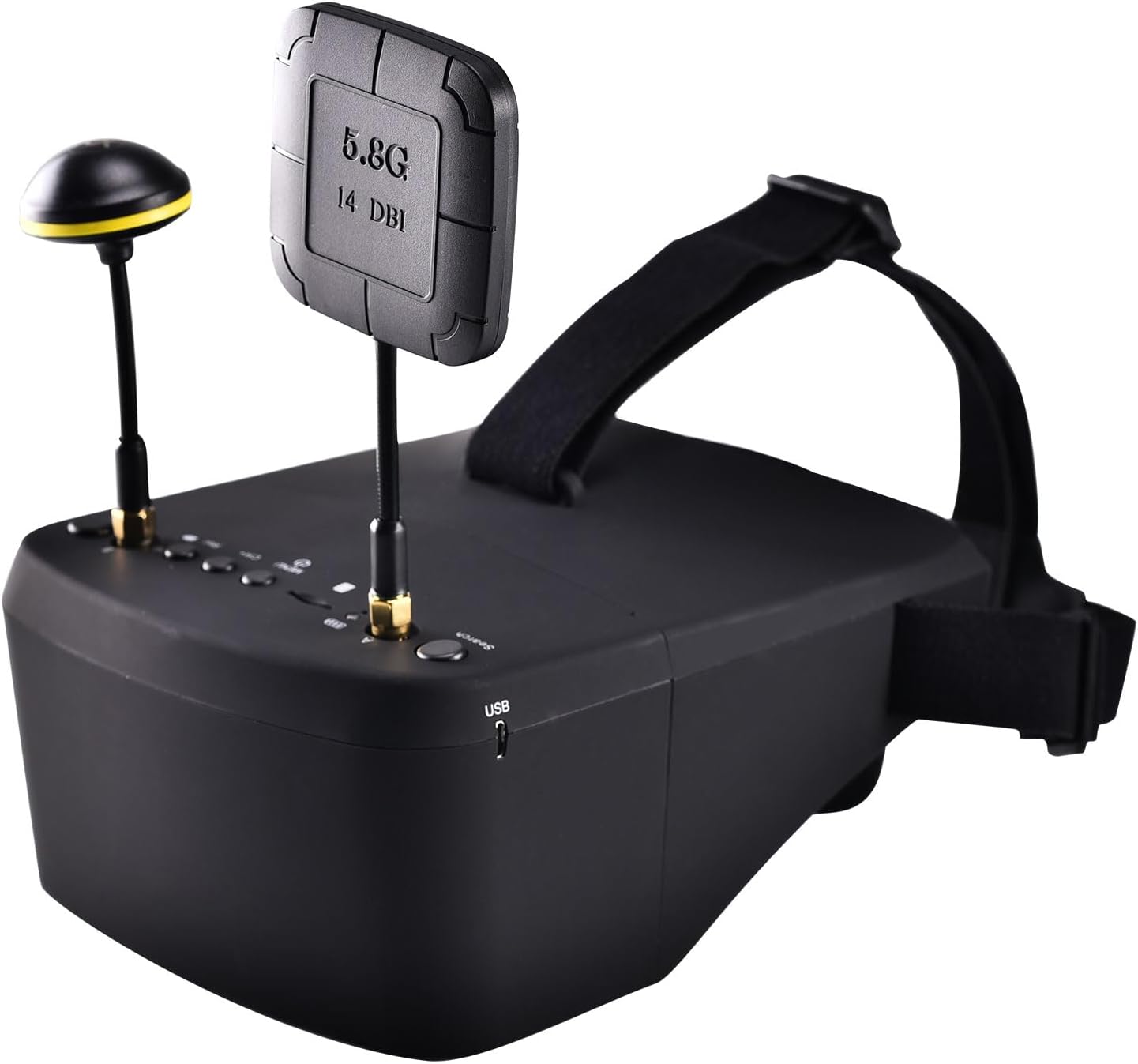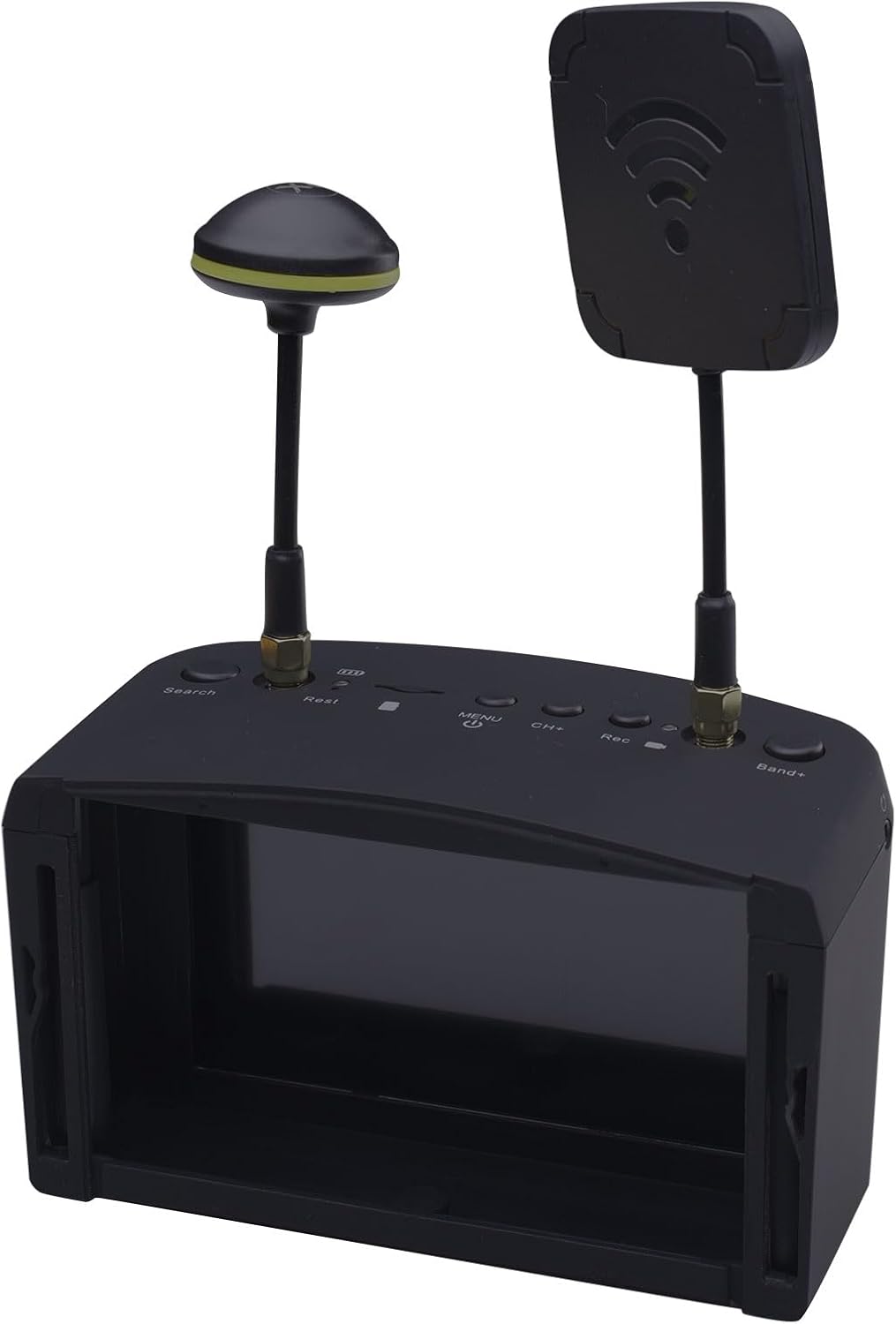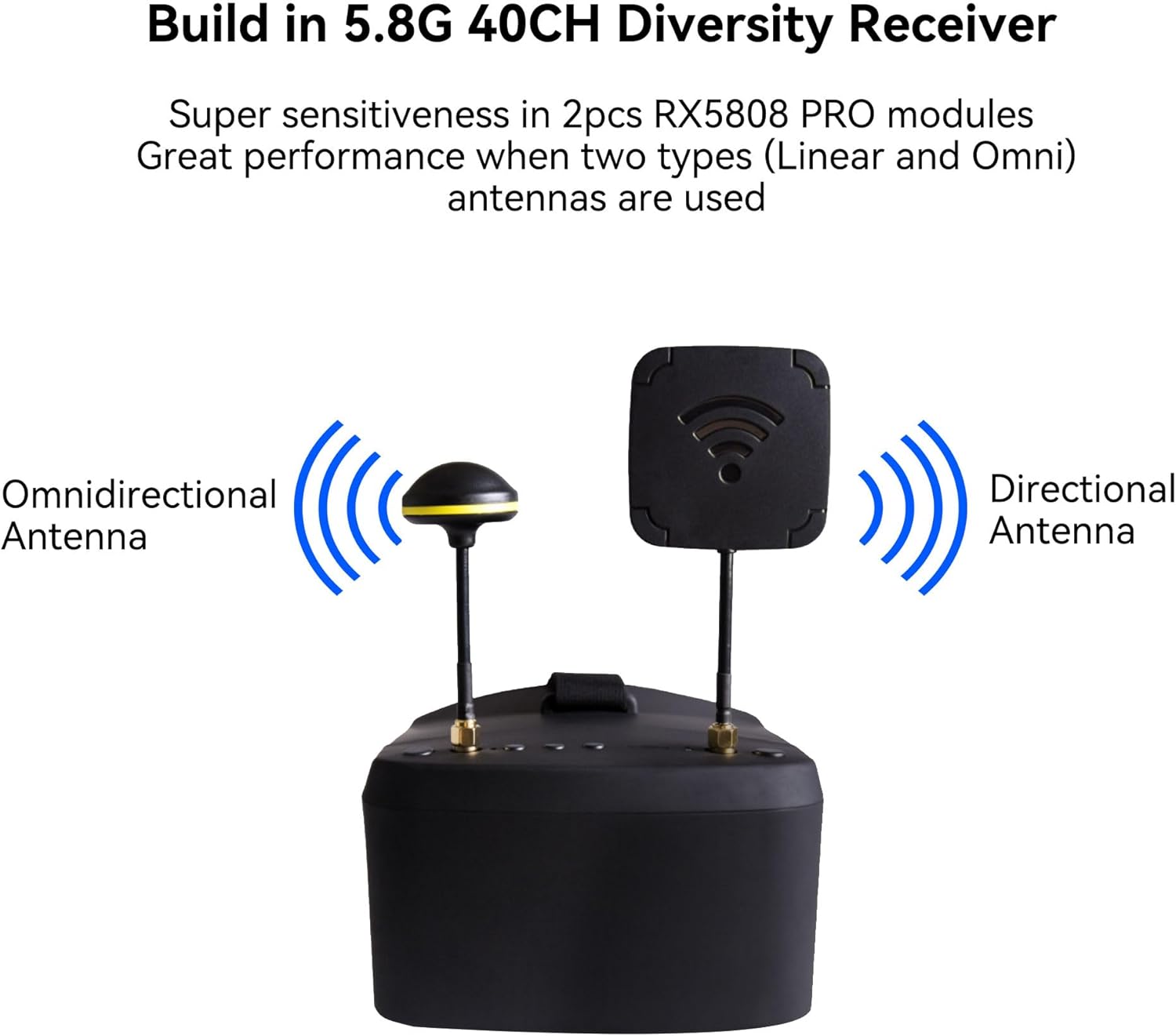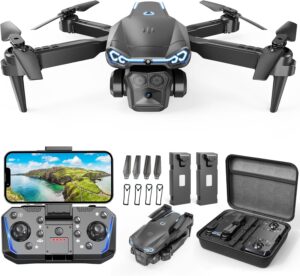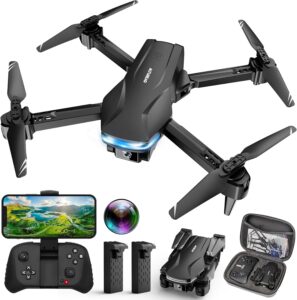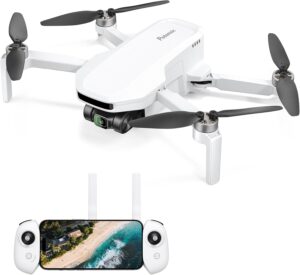Have we ever wanted to strap a small cinema to our faces and pretend we’re the world’s tiniest air-traffic control team?
Why We Picked the EV800D FPV Goggles by Speedybee
We were looking for something simple, sturdy, and satisfying—goggles that wouldn’t make us feel like we’d taken out a second mortgage for a hobby that primarily consists of chasing a small airplane across the sky. The EV800D FPV Goggles with DVR by Speedybee promised a handful of things we value: real-time analog video with minimal delay, a built-in DVR for capturing our better moments (and our very worst), a bright 5-inch screen, and dual-antenna reception for a more stable signal. We wanted a set that could handle analog FPV from drones, RC cars, or planes without needing a graduate degree to operate. On paper, these fit.
The Short Story of the Feature Set
The built-in DVR lets us record our flights and drives without extra gear, and the auto-search function takes a lot of the squint-and-twist out of channel selection. Dual antenna reception enhances signal stability so we can focus on steering instead of static. The 5-inch LCD is bright enough to hold up outdoors (within reason), and there’s audio output for those of us who like our real-time hiss accompanied by the occasional mic’d motor squeal. Low power consumption means longer sessions between charges. In short, this set aims to be the dependable box goggles for analog FPV that we can grab and go.
EV800D FPV Goggles with DVR - 5.8G 40CH 5 Inch Screen Build in Antenna Battery for Analog FPV Camera and Transmitter FPV Drone RC Car Airplane Hobby by Speedybee
Unboxing and First Impressions
We’ve learned that unboxing can be dangerously theatrical: cardboard opens, foam peels away, and we half expect a choir. With the EV800D, things are pleasantly no-nonsense. The goggles are compact, a touch industrial, and satisfyingly direct in their design. We appreciate the absence of fiddly bits and the presence of plainly labeled buttons. There’s an immediate sensation that we could take them to a dusty field, a skateboard park, or a kitchen floor obstacle course and not spend an hour worrying about setup.
The materials feel durable enough for hobby use: the straps have a reasonable stretch, the face foam is adequate, and the plastics won’t win any awards but don’t feel cheap. We noticed right away how the 5-inch display sits in that sweet spot where the image feels immersive without overwhelming our eyes.
What’s in the Box and How It Fits in the Field
There’s a certain relief in not drowning in extras. We get the goggles, the antennas for dual reception, a charging cable, and the basic bits needed to get in the air or on the ground quickly. It’s less of a ceremony and more like gearing up to do something fun without turning our coffee table into a temporary electronics lab.
We particularly liked that the included antennas are quick to mount, and the faceplate sits comfortably without cutting into our nose. It’s a box goggle fit, meaning it’s less like wearing fashionable eyewear and more like looking through a shoebox theater. For many of us, that’s not only fine—it’s comfortable.
The Parts That Make the Biggest Difference
We’re partial to gear that works more than gear that winks. The EV800D’s biggest gifts are:
- Real-time video with minimal delay: Analog FPV remains unmatched for near-zero latency in casual flying and driving.
- Dual antenna reception: Better signal stability and less breakup when we’re skirting trees or cruising behind a hedge.
- Built-in DVR: Automatic storytelling for our future selves, editing optional.
- Low power consumption: Longer sessions, fewer battery nags.
- Auto-search and key frequency search: One button and we’re on the right channel more often than not.
- 5-inch bright LCD, 800×480: Easy to see, easy to share with friends who want to peek over our shoulder.
A Quick Reference for the Key Features
We like a cheat sheet we can glance at before heading out. Here’s ours.
| Feature | What We Noticed | Why It Matters |
|---|---|---|
| Built-in DVR | Captures standard-definition analog video to microSD | Great for reviewing flights and sharing clips |
| Dual Antenna Reception | Two antennas for better signal stability | Fewer dropouts and cleaner image in tricky spots |
| Low Power Consumption | Longer runtime on the built-in battery | More flying/driving, fewer charge breaks |
| Auto-Search + Key Frequency | Finds and locks channels quickly | Simplifies setup across 5.8G 40 channels |
| 5-inch 800×480 LCD | High-brightness, good visibility | Easier outdoor use and a more immersive view |
| Audio Output | Headphone-friendly | Useful when our camera/transmitter includes audio |
| External Video Input | Accepts analog video source | Works as a portable field monitor |
Setup: From Box to First Flight Without Drama
We prefer “Turn it on, let it work.” The EV800D mostly honors that.
Charging and Power
The built-in battery spares us from swapping cells. We plug in, charge up, and go. The low power consumption means we can get through multiple batteries on our quad without scrambling to find an outlet. As with any gear, we keep an eye on the power indicator and avoid totally draining it, especially in cold weather where performance can dip.
Antennas and Orientation
The dual reception setup uses two antennas that work together to keep the image stable. We install them snugly and point any directional one toward the general area we plan to operate—especially helpful when we’re facing a course or a field. For casual driving or flying all around us, omnidirectional antennas keep things even.
Channel Scanning and Bands
Auto-search is our best friend here. We press the button and watch the EV800D cycle through channels until it latches onto our transmitter. It’s not magic, but it feels close. If we know our camera and transmitter’s band and channel, we can set it directly and skip the scanning. For us, scanning is handy when we’re at a meetup and everyone’s on something different.
DVR Recording and File Management
Recording is straightforward: we pop in a microSD card (we stick to reputed brands and modest capacities for reliability), press record, and let it run. The DVR captures what the goggles see, including static and noise. That’s both honest and practical—if we fly behind a tree and the image shivers, the DVR memorializes our choices. We check card formatting (FAT32 usually plays nice) and keep spare cards for longer sessions. We also power down properly to avoid corrupting files.
Connecting External Video and Headphones
We tried the external analog input to use the EV800D as a field monitor. It’s not our main use case, but it’s handy for troubleshooting a camera or verifying a transmitter. The audio output is a low-key pleasure when we have a mic’d setup on our aircraft or vehicle—it makes us feel close to the action, and it’s surprisingly helpful for gauging throttle changes.
Field Test: Drone, RC Car, and Plane
We don’t measure joy with a caliper, but we do carry a few standards in our pockets.
With a 5-Inch Freestyle Drone
The goggles kept up with our flips and allegedly graceful pirouettes. We saw the usual analog snow when we tucked behind a tree and the signal had to work for it, but the dual antenna reception softened the blow. Latency felt near-instantaneous—one of the strengths of analog—and that gave us confidence to fly tight lines within reasonable range.
With a 1/10 RC Car on a Park Loop
Ground-level FPV is absurdly fun and a different kind of difficult. The EV800D made the experience feel cinematic without the headache. Multi-path reflections off benches and fences can be rough, but we found that a mixed antenna setup helped—an omnidirectional to pick up the scattered signals and, if we had it, a directional to emphasize the forward view down the path. The goggles handled the variety with composure.
With a Lightweight Wing
We took a gentle line-of-sight launch and then settled into the goggles. The 5-inch screen provided a readable horizon and made OSD elements clear enough at a glance. Again, analog is honest: when we pushed the limits of range or line-of-sight, the image reminded us with noise before cutting out, offering a little grace to turn back. The diversity reception made those fringes more manageable.
Latency: The Reason Analog Still Thrives
If our fingers and thumbs had a love language, it would be immediacy. The EV800D delivers minimal delay typical of analog, which matters when we’re threading between branches or darting under picnic tables. We’ve flown digital systems and appreciate their clarity, but when we want that direct, responsive feel without breaking our budget, this is the kind of tool we reach for.
Signal Stability and Range: Real-World Behavior
We won’t pretend that dual antennas transform physics, but they absolutely help. With two antennas receiving and the system combining the best signal, we saw fewer sudden hits of snow and smoother transitions when we flew or drove behind objects. A proper antenna choice for the environment—omni for wandering, directional for distance—pays off. For most parks and fields, the signal remained comfortable. We still respect line-of-sight and keep our transmitter power within sensible bounds and local rules.
Screen Quality and Readability
The 5-inch 800×480 LCD is the workhorse heart of these goggles. Colors lean slightly vivid, which we actually prefer in outdoor daylight. The brightness is strong enough that we weren’t squinting, though we still avoid facing fully into harsh sun. The aspect ratio makes OSD elements on most analog cameras easy to read. If we’re picky about absolute color accuracy, we acknowledge this is a field display, not a calibrated studio monitor, and move on with our lives.
On Aspect Ratios and Stretching
Analog cameras can output different formats, and we occasionally see mild stretching depending on settings. It’s par for the course with many box goggles. We care more about clarity and motion tracking than perfect geometry when we’re whipping past a soccer goal.
Eye Comfort and Fit
Box goggles like the EV800D don’t rely on adjustable IPD like binocular-style models. Instead, there’s a single screen with optics designed to be comfortable for a wide range of faces. We found the sweet spot easy to look at without fiddling. The foam is serviceable, and the head strap does its job without drama. If we wore glasses, we either tried thin frames under the housing or adjusted the strap tension to find a fit that didn’t press uncomfortably. As with all goggles, small fit tweaks go a long way.
DVR: The Archive We Didn’t Know We Needed
The built-in DVR means our great moments and our not-so-great ones aren’t left to memory. We record at standard definition, which reflects the analog feed, complete with any static and noise. This is not an HD cinema camera; it’s a faithful witness. Still, for reviewing our lines, sharing with friends, or diagnosing why a flight went sideways, it’s more than enough.
File Handling and Reliability
We stick to reputable microSD cards and keep them formatted. The DVR typically breaks recordings into manageable segments. If we forget to stop recording before power-off, we sometimes need to repair a file. We learned to give it a second to finish writing before shutting down. That ounce of patience saves a lot of grumbling later.
The Beauty of Imperfection
There’s something charming about how the DVR captures the analog experience, static and all. It’s storytelling with texture. When we finally nail a line we’ve been practicing for weeks, the recording becomes a small trophy—no polish needed.
Compatibility and What Plays Nice
These goggles are for analog FPV. They shine with 5.8G analog transmitters and cameras used in most traditional FPV drones, RC cars, and planes. They’re not made for native digital systems like DJI O3, Walksnail, or HDZero. That’s not a failing; it’s a choice. If our world is analog—either by preference, budget, or a love for minimal delay—these fit snugly in our kit.
Using with RC Cars and Planes
For cars, we tend to keep the transmitter antenna high and clear. For planes and wings, we respect range and line-of-sight, and we make sure the antenna orientation isn’t playing games with polarization. The goggles don’t care what we’re piloting; they only ask for a stable analog feed and a reasonable amount of respect for interference and obstacles.
External Analog Input
We occasionally use the EV800D as a field monitor by plugging in an analog source. This is the Swiss Army Knife trait we didn’t think we needed until someone asked us to help diagnose a camera on a friend’s rig. We can watch, adjust, and declare victory without hauling a separate screen.
Who These Goggles Suit Best
We see a clear audience in:
- Beginners who want straightforward goggles without complication
- Intermediate pilots who appreciate analog’s immediacy and want a reliable backup or primary set
- RC car and plane hobbyists who want immersive video without the stress of HD ecosystems
- Anyone who values a built-in DVR and dual antenna reception in a compact, affordable package
Those who should look elsewhere:
- Pilots locked into digital ecosystems for their main flying experience
- Users who require HD recording from the goggles themselves
- Anyone who insists on binocular-style optics and adjustable IPD for a different fit
Everyday Use: The Gentle Ritual
Our routine became blissfully simple. Charge the goggles. Charge our flight pack or car pack. Power on the goggles, power on the model, hit auto-search, and we’re watching. We prefer to record before we take off, in case we forget mid-flight. A strap adjustment here, an antenna tilt there, and we’re off to embarrass ourselves less than yesterday.
Tips That Made a Noticeable Difference
We’ve gathered a few habits to keep things smooth:
- Use quality antennas: Directional plus omni gives us flexibility. Replace battered antennas; they matter more than we think.
- Keep the lens clean: A microfiber wipe in our pocket saves us from watching a smudge for twenty minutes.
- Format microSD cards in the goggles: It preserves compatibility and reduces file errors.
- Manage heat and sun: Don’t leave the goggles baking in a car. Screens are like us—happier at room temperature.
- Stay within line-of-sight: Better signal, better safety, better compliance with local rules.
Troubleshooting Without Tears
A few quirks are inevitable, and here’s how we handled them:
- Static or rolling image: Verify channel and band; use auto-search, then manually confirm. Try a different antenna.
- DVR not recording: Check the microSD seating and formatting. Make sure there’s free space and the recording indicator is on.
- Weird colors or tearing: Reseat the antennas, check the transmitter’s power level, and avoid standing between the goggles and the model.
- Short runtime: Charge fully, avoid extreme cold, and don’t leave the goggles powered when not in use.
- External audio quiet: Increase volume on the goggles if adjustable, and confirm the camera/transmitter actually outputs audio.
Comfort on the Face and in the Mind
We won’t pretend a box goggle turns us into fashion icons, but there’s a certain freedom in not caring about looking sleek. The EV800D feels stable, balanced, and light enough for extended sessions. We snug the strap just enough to seal out light without cranking it like a jar lid. The foam can be supplemented with an aftermarket pad if we’re particular, but out of the box, it’s acceptable for long afternoons.
The Screen in Harsh Light
The 5-inch LCD is bright enough that we only struggle when the sun is aimed directly at our eyes. A hat brim helps. We angle the goggles slightly and keep brightness up. For sunset flights, the screen shines—literally and figuratively—without becoming overly contrasty.
Signal Strategy: A Bit of Antenna Wisdom
Antenna choice is the secret sauce of analog. In open spaces where we’re moving all around us, omnidirectional antennas maintain consistency. If we’re running a course in one direction, like a field with a defined start and finish, we’ll add a directional antenna aimed at the action. Dual antenna reception helps the goggles pick the cleaner signal on the fly. It’s not sorcery, but the improvement is real and noticeable.
The Joy and Honesty of Analog
We sometimes think of analog like vinyl—it’s not strictly better, but it has character and immediacy that’s hard to replicate elsewhere. The EV800D doesn’t promise perfection. It promises honesty. When the signal is strong, it’s an immediate thrill. When it stumbles, it tells us why, and we adjust. This is a collaboration between us, the airwaves, and the goggles.
Using the Goggles as a Field Monitor
We like that the EV800D can moonlight as a monitor using the external analog input. It’s a good way to get a second set of eyes on a build without handing over a head-mounted display. It’s also useful for teaching: we can let someone watch on the goggles while we pilot on another screen or vice versa.
What We Wish Were Different
We’re not shy about nitpicks:
- The image is standard-definition: That’s an analog reality, not a flaw, but if we’re coming from digital HD, the difference is noticeable.
- The DVR records what the goggles see: That means snow and all. Again, honest, but different from onboard HD recordings some cameras provide.
- Aspect ratio quirks: A few camera OSDs don’t align quite perfectly in all scenarios, though it’s rare to be a meaningful problem.
These aren’t dealbreakers; they’re reminders that the EV800D is designed to be a no-fuss analog companion, not a luxury cinema suite.
Safety, Etiquette, and Sanity
We think of the goggles as a trust exercise. We follow local laws and fly where we’re allowed. We keep clear of people and animals, and we never fly out of our skill comfort zone just because the image is smooth. If we’re at a meetup, we coordinate channels so we’re not stomping on someone else’s feed. Nobody wants to be the person who transforms their friend’s FPV into a surprise snowstorm.
Price-to-Fun Ratio
There’s an economy here that we appreciate. The EV800D delivers a lot for the cost: dual antenna reception, a bright 5-inch display, a built-in DVR, and a battery designed to sip power rather than chug it. It’s a pragmatic, fun-focused purchase that encourages us to get out and play rather than fret over specs.
A Practical Look at Everyday Scenarios
We use the goggles in different environments, and we’ve gotten a feel for how they behave.
| Scenario | Our Setup | What Happened | Takeaway |
|---|---|---|---|
| Park freestyle | Omni + directional antenna | Stable with occasional noise behind trees | Point the directional at the course area for best results |
| RC car on sidewalk | Two omni antennas | Multi-path but watchable and fun | Keep the transmitter antenna high and clear |
| Wing over a field | Omni + directional antenna | Smooth horizon; graceful noise at edges | Turn back when the snow starts—analog gives warning |
| Indoor whoop | Two omni antennas | Bright picture, minimal delay | Watch out for metal shelves and microwaves |
| Troubleshooting a camera | External analog input | Quick verification without extra monitor | A Swiss Army option we used more than expected |
Frequently Asked Questions We Asked Ourselves
We can now answer our own questions with minimal eye-rolling.
- Does it work with digital systems? Not natively. This is for analog 5.8G FPV. Digital ecosystems require their own receivers and displays.
- Is the latency low enough for freestyle? Yes, it feels immediate, consistent with analog expectations.
- Can we use it as a monitor? Yes, with external analog input.
- Does the DVR record clean video? It records what the goggles see, including noise. For HD footage, record onboard with a separate camera.
- Is it good for beginners? Absolutely. The auto-search, sturdy build, and straightforward controls make it approachable.
- Is it comfortable? For most faces, yes. It’s a box goggle feel, not binocular. We adjusted straps and were fine for long sessions.
Maintenance and Care Without Overthinking
We treat the EV800D like a friendly appliance. We store it in a soft case or bag to protect the screen and optics. We wipe the lens and foam occasionally. We avoid leaving it in hot cars or damp backpacks. The battery appreciates partial charges rather than deep drains. If the foam eventually compresses, we refresh it with a replacement pad or a stick-on cushion.
Real-World Pros and Cons
We’ve been around enough gear to know that even the best has edges.
Pros:
- Built-in DVR for easy recording
- Dual antenna reception for more stable signal
- Bright 5-inch LCD that’s easy to live with
- Auto-search simplifies channel finding
- Low power consumption stretches sessions
- External analog input and audio output add versatility
Cons:
- Standard-definition analog image (by design)
- DVR records the analog feed including static
- Box goggle fit may not suit everyone’s preference
- No native support for digital FPV systems
The Feeling We’re Left With
There’s a reliability to the EV800D that makes us plan more sessions. It earns trust by turning on and working, meeting us where we are rather than lecturing us with features we don’t need. The goggles behave like a good friend on a Saturday morning: ready to go, unfussy, and amused when we clip a gate we swore we wouldn’t.
A Day in the Life With the EV800D
We charge everything at home. We toss the goggles, a couple of antennas, and spare batteries into a beat-up bag. On-site, we set up under a tree or near a bench, point the directional antenna where we’ll be flying, and let auto-search do its job. The recording light glows. Our fingers set to work, guided less by thought than by habit. We hear the whirr of a prop or the hum of a brushed motor. The image shimmers and snaps into place. For the next hour, there’s only us, the model, and the honesty of a small screen receiving a fragile signal. We come home with sun on our cheeks and a microSD full of stories.
Who This Will Make Happiest
- Learners who want confidence in what they see
- Tinkerers who like versatile tools
- Analog faithful who want simplicity and signal stability
- Hobbyists who value recording without extra baggage
Our Verdict
We keep reaching for the EV800D FPV Goggles because they’re the right kind of easy. They bring together the essentials—dual antenna reception, a bright 5-inch screen, DVR recording, and low power draw—without making a spectacle out of themselves. For analog FPV across drones, RC cars, and planes, they feel like the practical choice we’re glad to have on hand. They won’t replace HD if we’re committed to that path, but for what they are and what they cost, they’re a daily driver we trust.
We like gear that encourages us to go outside, try a little harder, and forgive ourselves when we bounce. The EV800D does that. We put them on and forget what’s complicated about the hobby, which is how we know they’re doing exactly what they should.
Disclosure: As an Amazon Associate, I earn from qualifying purchases.
